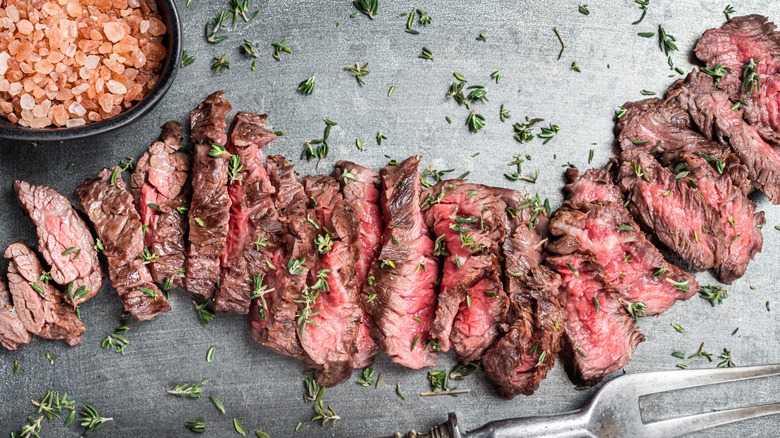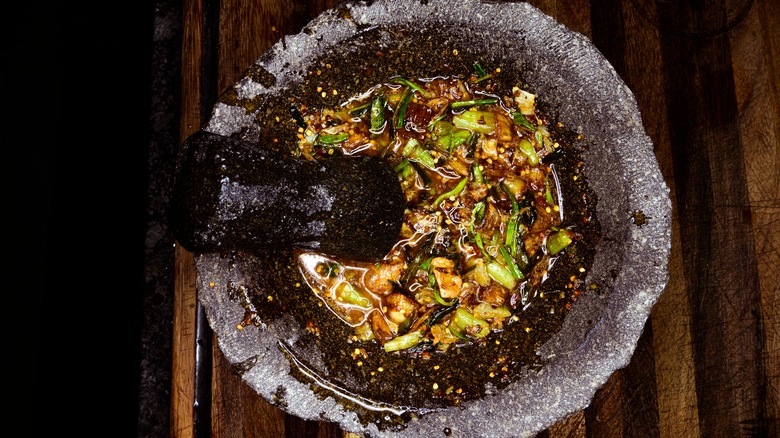Yes, There Is A Correct Way To Cut Skirt Steak
There's lots of room for snobbery in the world of steak, with many meat lovers being particularly choosy about their favorite cuts. But here's the thing: it's not all about your filet mignons and ribeyes. As delicious as those cuts are, there are plenty of others that are just as worthy of praise. Some of these come from the underside of the cow, or the plate. These include the butcher's favorite, the hanger steak (or onglet), which was Anthony Bourdain's pick for the most underrated steak cut. There's also the bistro classic, the bavette, best served with a classic sauce au poivre. And finally, there's the cornerstone of a great carne asada: the humble skirt steak.
The skirt is a particularly flavorful cut, but it tends to lack the fat that makes steaks like ribeyes so special. To ensure your meat stays tender, you need to handle it with care. This starts with marinating it, and extends to how it's served — specifically, how you slice it! To find out more, we asked Jorge Guzmán, a James Beard Award finalist and chef at Chilango, MN, and Sueño in Dayton. He recommends slicing your skirt steak "thin and against the grain." Slicing against the grain breaks through the muscle fibers of the meat (which can run the entire length of the steak), resulting in a much more tender bite.
How to serve your skirt steak once you've sliced it
Slicing your steak into thin strips, as Jorge Guzmán suggests, further tenderizes it by shortening those muscle fibers as much as possible. Then, once you've done that, you can elevate the flavor of your skirt steak even more by adding a delicious homemade sauce. We asked Chef Guzmán about his go-to accompaniments, and he suggested a few classic Mexican pairings.
"As a Mexican, I'm always gonna say a chile torreado," he said. For those not in the know, chile torreados are a traditional Mexican preparation of jalapeño and serrano peppers, blistered and fried in oil over very high heat, then served with a touch of salt and a squeeze of fresh lime. They make a fantastic accompaniment to tacos, especially when skirt steak is involved.
Chef Guzmán also recommended salsa de molcajete, a charred tomato salsa made using a molcajete — a traditional Mexican pestle and mortar. If you decide to try it yourself, just remember to check your molcajete's authenticity for the best results! Finally, he suggests adding some lime for acidity, which will ensure the meat stays tender, along with grilled onions. The onions add a delicious depth of flavor and sweetness as they lightly caramelize, complementing the saltiness of the steak, the lightly charred notes of the salsa, and the bright tang of the lime.


